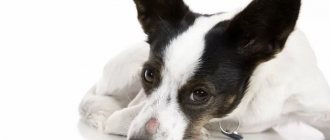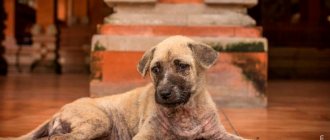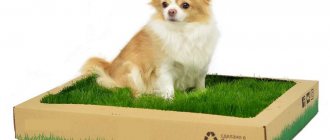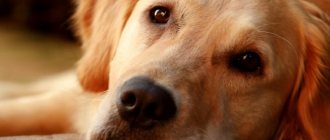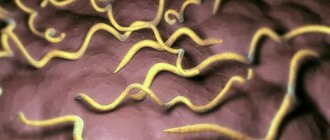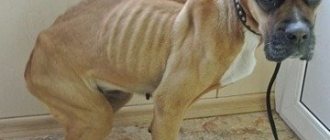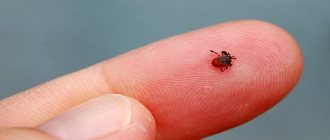What is lichen
An inflammatory dermatological disease of an infectious or viral nature that affects the upper layer of the epidermis. This is how medicine defines lichen. Its characteristic signs are peeling of the skin, itching and pigmentation disorders. The causative agents of lichen can be specific microorganisms, including fungi that cause infection. Some types of this disease are viral in nature. This is the case with pink and herpes zoster. These species often develop against a background of weak protective functions. Other forms are the result of fungal infection, for example, ringworm.
Trichophytosis in dogs - what is it?
This fungal disease is infectious in nature and has several stages of development. It is difficult to diagnose and treat. The disease is caused by infection with fungi such as Microsporum, Microsporum gypseum, Trichophyton mentagrophytes. After contact with the fur and epidermis, microorganisms begin to actively develop in the deep layers of the skin and hair follicles. With a high degree of infection, even the claws are affected. As a rule, internal organs are not affected during infection.
Treatment of ringworm in dogs is difficult due to the persistence of the pathogens. They can persist for a long time inside a pet, on litter, trees, or in the soil for more than 18 months. Transmission of pathogens occurs only through physical contact. For this reason, in order to get rid of a dog’s illness, owners must follow safety measures and protect the animal from contact with various objects.
What does it look like
When a pet gets sick, owners cannot always guess about the presence of trichophytosis, because there are no obvious signs of it. After about two weeks, the symptoms will appear clearly:
- First, a characteristic, barely noticeable rash will appear.
- Subsequently, the rash enlarges and turns red.
- When pathogenic fungi grow in the epidermis, hair falls out.
- Formations appear on different parts of the body: on the head, ears, lower parts of the paws, and the base of the tail. If no treatment is taken, the infection will spread to other areas.
The spots on the skin cause severe itching, and the affected areas with a noticeable crust may peel off. If proper treatment is not urgently organized, then pus will form under the scab, the skin under the scabs will be wet and inflamed, and the coat will look like it has been trimmed. Remember that if you delay treatment, the problem will worsen and it will be very difficult to cope with it. If advanced trichophytosis is already observed, you should immediately contact your veterinarian to select appropriate medications.
Is shingles transmitted?
The contagiousness of lichen is determined by its type and the state of the person’s immunity. Medicine classifies this disease as conditionally transmitted. Although many doctors consider lichen to be truly contagious in all its forms, which are transmitted from sick to healthy. But the existence of such a disease in the form of a peculiarity of a particular person’s body and immunity has been proven. In this case, lichen may not even be treated, but it is not transmitted. Contagious forms include pink, ringworm and shingles. Their transfer is carried out:
- from a sick person to a healthy person through direct contact or the use of household and personal objects;
- from animals to humans through direct contact with them.
From person to person
One of the first ways that lichen is transmitted is from a sick person to a healthy one. Infection occurs through personal hygiene items, clothes, bed linen, and towels. Transmission is possible only through direct contact with a patient due to:
- touching;
- handshakes;
- kiss.
You can become infected on public transport by touching handrails, or through door handles. This is how pityriasis rosea can be transmitted. But this only happens upon contact with a person or his things. Is lichen transmitted from person to person by airborne droplets? The answer to this question is negative. People with weakened immune systems are especially susceptible to contact infection. Ringworm of a fungal nature is easily transmitted in a humid environment, for example, swimming pools, saunas, baths. They can also be infected through ordinary sand on the beach.
From dog to man
Ringworm is transmitted from dog to person. It is considered the most highly contagious. This form of the disease is more often observed in children who come into contact with stray animals. To avoid infection, you need to limit your child from street dogs. Sick animals are characterized by areas of baldness. Because of this, lichen is called ringworm. Such areas should never be touched, as this is more likely to lead to infection, especially in a child.
From man to cat
Those lichen forms that are transmitted from animals to humans also have an effect in the opposite direction. If the patient has direct contact with a healthy cat, then she can also become infected with this unpleasant pathology. Especially active in this regard is ringworm. It is characteristic of animals and is easily transmitted from them to humans and vice versa.
From a cat
The same answer is suitable here as for the question of whether lichen is transmitted from dog to person. The situation does not change with the cat. If she is sick, then a person can easily become infected through direct contact. In addition, even a cat that has recovered from the disease is a potential source of pathology. Microspores could remain in the animal's fur, especially if it has high immunity. With single contact, infection often does not occur, but in this case it is still better to wash your shoes and wash your hands thoroughly with soap. You should stay away from cats with strange spots on their faces.
Necessary preventive measures
It is impossible to completely eliminate lichen infection, but certain precautions will help protect your pet from many illnesses.
Prevention of lichen in dogs:
- A balanced diet, vitamins and active walks help strengthen the immune system.
- Avoid contact between your dog and stray animals.
- Carry out regular inspection of your pet's skin.
- Monitor the condition of your dog's fur and claws.
- Treat your dog’s belongings with special disinfectants and anti-parasite preparations.
- Get all required shingles vaccinations.
- Visit a veterinary clinic.
How is it transmitted?
The way a certain lichen is transmitted depends on its type. Some forms can be contracted from humans, while others can be contracted from animals. In general, transmission occurs through direct contact with the patient or through his personal belongings and those that he used. The risk group includes children and people with weak immune systems. If the body’s defenses are at a normal level, then even with contact it is possible that you will not become infected. In this case, the immune system easily copes with the pathogen. In general, there are several types of lichen:
- shearer;
- pink;
- encircling;
- pityriasis
Shearer
One of the common forms of lichen is ringworm. It is also considered the most contagious. The causative agent is the fungus trichophytosis or microsporia. People become infected first when they come into contact with a sick person. The second one is more often transmitted from street animals, so small children who easily pet and play with any cat or dog are more susceptible to it. Typical symptoms of ringworm may look like this:
- patches of redness with jagged edges, a flaky center and a border of small blisters;
- hairs fall out in the center of the spot;
- There may be patches of baldness on the head.
Ringworm is transmitted very easily, because this form is highly contagious. Very dangerous for healthy people:
- touch the areas of inflammation of a sick person;
- wear the clothes of an infected person;
- close contact with the patient (handshake, kiss, etc.);
- use the towel of the infected person and sleep in the same bed with him;
- interact with sick domestic or street animals, especially if they have areas of baldness.
Pink
This form of the disease is characterized by small oval or round, slightly scaly spots. They have a pinkish or brownish tint. The nature of the disease is infectious-allergic, the causative agent is a virus. In medicine, this disease is also called roseola and Zhiber's disease. The exact reason for its development is unknown. Some doctors believe the causative agent is the herpes virus. There is no exact data on whether pityriasis rosea is transmitted. The facts show that it is not contagious compared to other varieties.
- Giardia in children - symptoms and treatment. The first signs of giardiasis and tests, folk remedies and medications
- How to pickle onions - recipes with photos. How to deliciously pickle onions for salad, fish or meat
- Allergic cough attack
Members of the same family very rarely get this type of lichen. If this happens, the cause is considered to be a hereditary predisposition. The decisive factor here is immunity and the state of the nervous system. In overly excitable and suspicious people, the symptoms of the disease often intensify. Even in the absence of confirmed data on the transmission of such deprivation, doctors still believe that it is possible to become infected through the use of some of the patient’s things:
- combs;
- towels;
- dishes;
- bed linen;
- clothes;
- other personal items, for example, phone, computer, etc.
girdling
Another contagious form is shingles. Its causative agent is the herpes virus type 3, which also provokes chickenpox. The disease spreads along nerve fibers, often intercostal, which causes severe pain, especially in areas of future lesions. All this is accompanied by rashes on the body of small bubbles with liquid. This is very similar to herpes on the lips. Over time, each bubble opens, and it all dries out, and then a crust appears in this place. Fever often occurs. Neuralgia may be a complication.
Is lichen contagious in this case? This form is transmitted through contact between a sick person and a healthy person, but there is one condition. Infection occurs only during the period of rash. If a person has already developed crusts, then he is not dangerous to others. Those who have had chickenpox have the least chance of becoming infected. In general, the disease develops against a background of reduced immunity. It is not transmitted by airborne droplets. Infection occurs only through:
- close contact with a person;
- using the same accessories with the patient.
Pityriasis
The causative agent of this form of the disease is the yeast-like fungi Pityrpsporumorbiculare. They multiply in the stratum corneum of the epidermis. Spots of different sizes and colors appear on the body. They can be yellow, greenish-brown, brown or pink. This form of the disease can even last for years. It is provoked by an imbalance in the body or due to other serious pathologies:
- diabetes mellitus;
- hyperhidrosis;
- seborrheic diathesis;
- tuberculosis;
- vegetative-vascular dystonia;
- immunodeficiency states.
According to doctors, it is not contagious, because the yeast-like fungus is part of the normal microflora of the skin. Even under this condition, you should not use the same objects with the patient. With immediate contact there is little chance of becoming infected. Spouses and people who wore the patient's clothes get sick more often.
About the contagiousness of recovered animals and prognoses for recovery
Affected animals are believed to remain contagious for approximately three weeks from the start of treatment. But this is only true in cases where the chosen therapeutic strategy is truly effective, and the owner strictly follows all the veterinarian’s instructions. Otherwise, the animal’s infectiousness time may be seriously extended. So in situations where you have young children or elderly people in the house, we strongly recommend leaving the animal at the veterinary clinic for the entire period of treatment. This way you can protect your household from troubles. Dog contact with other pets and people can only be allowed after receiving two negative culture results.
As for the likelihood of full recovery and long-term prognosis. If the dog was treated normally, everything will be fine; in about a month and a half, the pathology will probably be dealt with. But relapse is quite likely in cases where therapy was interrupted too early (which is strictly not recommended), the wrong technique was chosen (for example, only local application of drugs was used), or if the pet has some kind of chronic disease that “kills” dog's immune system. Finally, in veterinary medicine it is not so rare to encounter animals that are lifelong carriers of dermatomycosis.
Incubation period of lichen in humans
The time from infection to the manifestation of the clinical picture of the disease is called the incubation period. In lichen, it differs depending on the type:
- Pink. The incubation period can last from 2 to 21 days. The first sign is a bright pink oval spot with a diameter of 2-5 cm.
- Encircling. In this form of lichen, the incubation period varies from several days to 4 weeks. The first symptoms are fever, burning and itching of the skin in places where pink spots form.
- Shearer. If a person becomes infected from another person, the incubation period lasts 2-6 weeks. When pathology passes from an animal, it is only 5-7 days.
- Pityriasis. The first signs of this form of the disease may appear 2-3 weeks after infection. Yellow, brown or pink spots appear on the body. In this case, no special sensations arise.
First symptoms of the disease
The classic symptom is the appearance of round and bald patches on the animal's skin. Each of them sometimes looks as if the pet's skin was burned with a cigarette. Often there is clearly visible redness in the center of the spots. With the indolent nature of the disease, it may happen that hair begins to grow back, while the edges remain bald.
Hair affected by fungus becomes very dry and breaks easily. This is beneficial to the parasite: its spores remain on the hairs, so that the fungus quickly spreads in the environment in this way. Often the first signs of lichen are mistaken for dermatitis or eczema, but areas of the skin affected by fungi most often do not itch. In very rare cases, onychomycosis develops. At the same time, the pet’s claws are affected: they thicken, become very rough and brittle. Sometimes foci of the disease are found on the animal’s nose.
A dangerous feature of parasitic fungi is their ability to “coexist” with the dog’s body for a long time. At the same time, the animal does not show any clinical signs of the disease; at first glance, the pet remains completely healthy. It is possible that he will not get sick in the future, but all this time the dog will walk, showering the entire surrounding area with hairs covered with spores of pathogenic fungi.
Let us note that there are especially many of these animals in shelters and dubious nurseries: if a dog has already been adopted from there, it must be taken to a veterinarian. Surely a lot of interesting things will come to light.
How not to get infected
To prevent lichen infection, you should follow just a few simple rules. The main thing is to limit contact with a sick person or pet. It is better not to touch foreign animals, especially children, at all. Pets are recommended to be vaccinated. Among other rules describing how not to become infected with lichen from a person or animal, the following stand out:
- do not wear other people's clothes;
- use only personal hygiene products;
- do not wash your entire body with antibacterial soap;
- strengthen the immune system with proper nutrition and physical activity;
- wash your hands more often or wipe them with antibacterial wipes;
- carry out thorough disinfection at the site where the patient is identified;
- do wet cleaning and ventilate the room more often.
Preventive measures
By following preventative measures, you can reduce the risk of infection.
- Give your pets timely vaccinations;
- Wash your pet and treat it with special products;
- Clean your hands thoroughly after contact with animals;
- Carry out procedures for caring for an infected dog while wearing gloves.
If the dog suffers from lichen, then the animal must be isolated. A sick pet should be kept at a distance from other animals and people. Keep children away from an infected dog.
Medical therapy
Specific therapy is prescribed by a doctor after diagnosing a form of lichen. Pink does not require special treatment, because immune cells cope well with it. In this case, antihistamines help speed up the process and reduce itching. To improve the condition, you should not wipe your skin after a shower - it should dry on its own. During the period of illness, you should not play sports, do hard work and often be in the sun. It will be useful to wear only natural fabrics. As for the treatment of other forms of lichen, it is carried out as follows:
- Shearer. Therapy includes topical antifungal drugs and oral antimycotics. Here, ointments, shampoos, gels and regular iodine are used to treat the edges of the stains to stop their spread.
- Pityriasis. It can be easily treated with ultraviolet light, so it goes away especially quickly in the summer. Here, the doctor also often prescribes antimycotics.
Treatment at home
Treatment of weeping eczema is difficult; if you do not achieve complete victory over the disease, it will spread again. To treat eczema, you need to find the cause, and this requires a visit to the veterinarian.
There are opportunities to minimize your dog’s suffering if you treat the symptoms and rule out possible causes of eczema yourself.
- Update the animal's diet.
- Avoid any foods high in fat.
- It is necessary to cut the hair on the affected areas of the skin and protect it from dirt by applying bandages.
- It is necessary to lubricate the affected areas of the skin with antibacterial creams or balms, but the most effective remedy will be common brilliant green, which dries the inflamed areas and disinfects them.
- To avoid licking problem areas, you must wear a protective collar on your dog.
Both types of diseases can be cured at home. But to avoid problems, take the animal to a veterinarian, who will prescribe the correct treatment and help prevent further problems with the animal’s health.
How to apply ringworm ointment
The area of skin needs to be prepared for the desired effect. The treatment is carried out in medical gloves, prepare scissors with blunt tips, metal containers, matches, tar soap solution, antiseptic, napkins and ointment.
The affected area of skin is treated with an antiseptic solution.
If there is hair along the periphery of the lesion, the hair is carefully cut at a distance of approximately 5 mm from the affected epidermis. The cut hair is immediately burned.
If there are scabs, they should be soaked in soapy water and wait until they soften. The scabs will need to be removed with tweezers, and the cleaned area will need to be treated with an antiseptic again. Soak the area with a gauze pad to dry it for applying the ointment.
After processing, both wool and used napkins are burned.
Prevention of licking of ointment and scratching
The dog suffers from burning and pain during the illness and at the beginning of treatment. She wants to scratch the wounded places. In the first minutes after application, the ointment also brings discomfort. The animal will want to lick or scratch the sore spots.
The only effective way is to use a protective collar or muzzle against licking. The dog will not see where to reach with his tongue and will not be able to reach there.
At the onset of the disease, when there are still only a few wounds, applying a gauze swab with ointment under a plaster or bandage will protect them from scratching. This way the dog will not be able to reach the lesions and spread everything throughout the body. If there is active resistance from the collar or the application of bandages, you will have to put a jumpsuit on the animal.
To distract the pet from scratching, he is taken out for an individual walk, where there is no possibility of contact with other animals and thereby infecting them.
Ringworm medications for dogs
After the diagnosis has been carried out and an accurate diagnosis has been established, complex treatment is immediately begun, solving several problems at once:
It is necessary to destroy pathogenic microorganisms that cause infection.
It is important to stop the spread of the lesion to prevent the addition of a secondary infection.
Remove itching and pain.
Normalize your pet's immunity.
To treat lichen, external and internal preparations are used: ointments, creams, gels, shampoos, solutions and tablets. The initial stage of the disease allows the use of only external agents. If the damage is already global, then ointments alone are not enough - taking tablets with injections is indicative.
The veterinarian prescribes additional treatment if there is compelling evidence for it. Therapy can be symptomatic, supportive and antifungal.
Antifungal agents: Fluconazole, Nizoral.
If a secondary infection occurs, then the use of antibacterial drugs Amphotericin and Nystatin is indicated.
The liver needs support, the dog is given some hepatoprotective agents, mainly Hepatovet.
Allergic symptoms are relieved with antihistamines Suprastin and Diazolin.
Immunity is normalized with immunomodulators and immunostimulants Glycopin and Immunofan.
To avoid problems with the gastrointestinal tract, give probiotics Olin or Lactobacterin, and add vitamins to the diet.
Antifungal agents differ from each other in additional functions. The list of remedies for canine lichen includes Lecaderm, Sanoderm, Miconazole, Fungin, Clotrimazonl, Imaverol. Names alone are not enough; you need to understand the difference between them. That is why the diagnosis is made accurately - the remedy can be selected incorrectly, then the effectiveness will be low and the expected effect will not be achieved.
Folk remedies
For some reason, not everyone is ready to accept qualified help from doctors, believing that they are only interested in money. But we pay for experience and knowledge, for a service.
If you treat yourself, then you should not definitely rely on folk remedies for lichen. Yes, they will help remove swelling, irritation, and relieve redness, but ringworm spores will definitely resist such treatment. Traditional medicine will have any tangible effect only at the beginning of the disease.
It is important to consider that alcohol infusions can further damage the skin.
Iodine is used as a folk remedy. They apply it to rashes 4 times a day, but do not allow the dog to lick the wounds. They also use apple cider vinegar. 5-6 wetting of the spots is required per day. Its use is advisable for ringworm. If the pink type is diagnosed, iodine is not used. With other types, this is a completely useless waste of time. In addition, experts do not recommend intensively treating the infection with iodine; this can also damage the animal’s skin.
To prevent the dog from licking the anointed areas, a special collar is put on it.
Among the auxiliary agents, infusions of chamomile, sage, St. John's wort, and tansy help. They moisten the keratinized skin to soften it. The dosage should not be too concentrated, as it can harm the skin.
Leather treatment is done by washing with creolin or tar soap.
Are there any vaccinations against the disease?
There is a vaccination against dermatomycosis, as lichen is also called. It is based on inactivated spores of fungi of dermatophytes, trichophytes and microsporiums.
One drug is beneficial against eight types of fungi at once, so the vaccine can be considered universal. The vaccine works by causing the body to react by producing antibodies to shingles pathogens, so that the risks are more than noticeably reduced.
If a pregnant dog has shingles
A pregnant bitch is vulnerable, her body is already busy bearing offspring, and lichen will begin to undermine the system even faster. Treatment is prescribed only after diagnosis by a doctor, especially after culture results.
